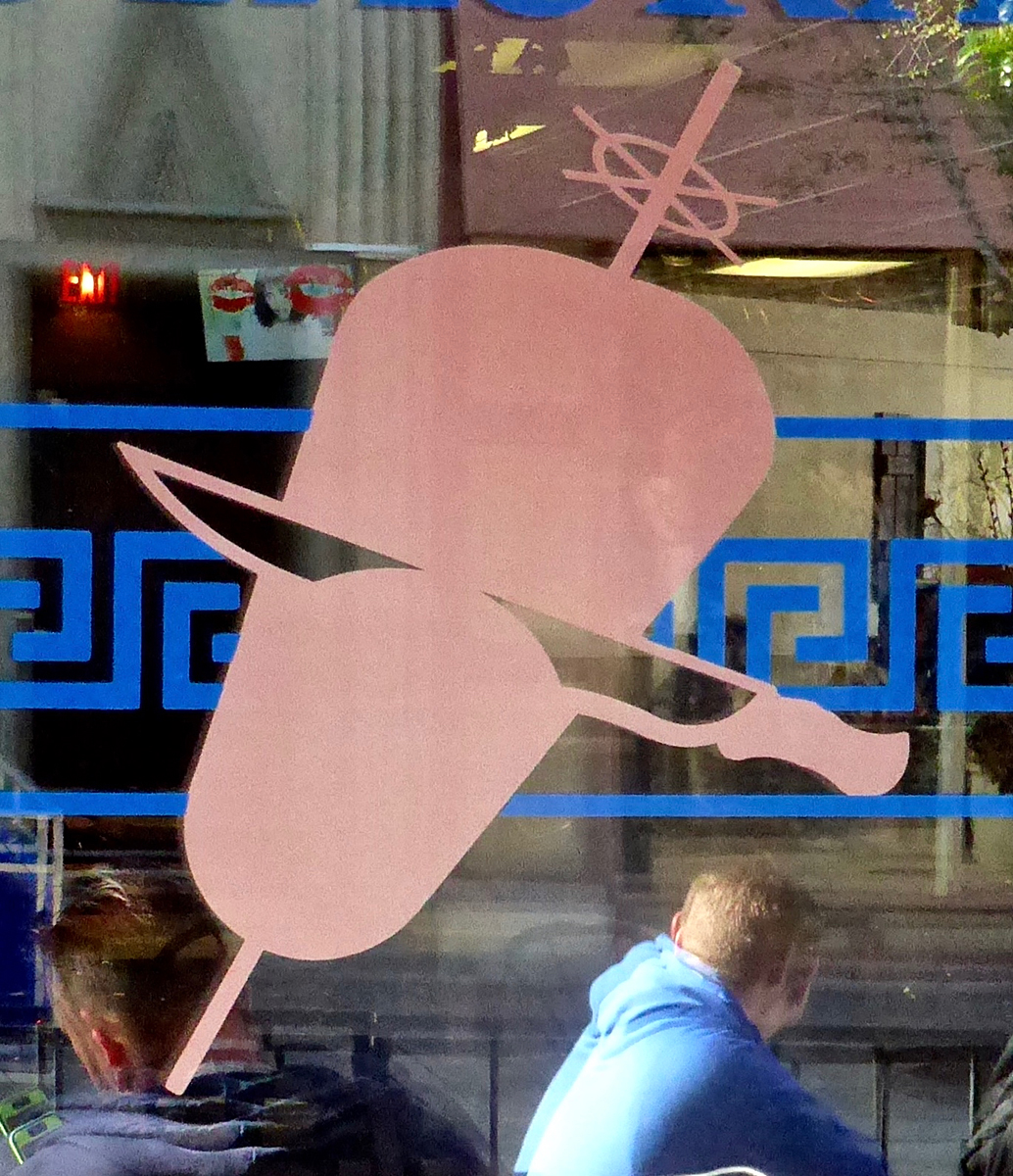Not Just A Bite To Eat
Gyros signs — the often hand-painted advertisements found at hot dog stands, pizza parlors and Greek fast-food joints — are modern-day icons, literally: devotional images produced by anonymous artisans to bring the faithful into communion with the object of their fervor.
Gyros is not to be taken lightly. More than just another “bite to eat,” it is the most intense of fast foods. The meat, onions and garlic-yogurt sauce of the gyros sandwich envelop and overwhelm any diner.
In contrast to conventional religious experience, gyros requires not so much faith as a suspension of belief — in the desirability of public intercourse and the virtues of clear arteries. Gyros is supremely sloppy, and dangerously volatile. The afterglow suffuses your being, oozing through every pore to fill out your aura as well. Gyros is the perfect loner food. Wise consumption is a solitary indulgence, ideally followed by a shower and a night to sleep it off.
The pita bread that defines a gyros has been, ironically, a healthy food staple in the form of wraps. But when grilled and enveloping gyros meat, it is transubstantiated. Externally crispy, internally soft, it encompasses meat that is as sacramental in its mystery as it is greasy, the true composition of the beef-and-lamb blend hidden in the dripping hours on the vertical spit.
The final kick that pushes the sandwich beyond guilty pleasure into whole-body experience can be found in its tangle of onions topped by a wad of yogurt-garlic sauce, with tomatoes the crucial buffer that keeps the rush of salt and grease and tartness just this side of manageable.
These are the ingredients of an authentic gyros, no more or less. A great gyros has them in just the right proportions. Not too much meat, lest the tomatoes be inadequate to their task. The pita grilled, not merely warmed. The meat fresh off the spit. And the sauce a true yogurt-garlic tzatziki — not just sour cream or, god forbid, some squirty liquid.
One prissy restaurant in Santa Barbara, California that purported to serve gyros not only used raw pita bread, but sauced the monstrosity with tahini. That bad joke shows how gyros, as with pizza and hot dogs, tends to be a big-city — specifically Eastern and Midwestern — experience.
Ideally, that experience happens in a room spotlessly clean and brightly lit, with pictures of Athens on the wall and sonorous Greek music rattling out of the speakers. The spits (two of them, one hopes) have pride of place in the parlor’s front window, and the sandwiches are served by swarthy guys named Ted with black pants, white shirts, slicked-back hair and thick accents: “Fries, boys? You like fries?” Of course we do. We’re in heaven, at least for a moment.*

* I must admit to some special pleading: This describes the first gyros parlor of my life, from the mid-1970s. It’s still there — the Parthenon in Madison, Wisconsin (pictured above).
Start The Gyros Tour
![]() 0 | 1 | 2 | 3 | 4 | 5 | 6 | 7 | 8 | 9 | 10 | 11 | 12 | 13 | 14 | 15 | 16 | 17 | 18
0 | 1 | 2 | 3 | 4 | 5 | 6 | 7 | 8 | 9 | 10 | 11 | 12 | 13 | 14 | 15 | 16 | 17 | 18![]()
